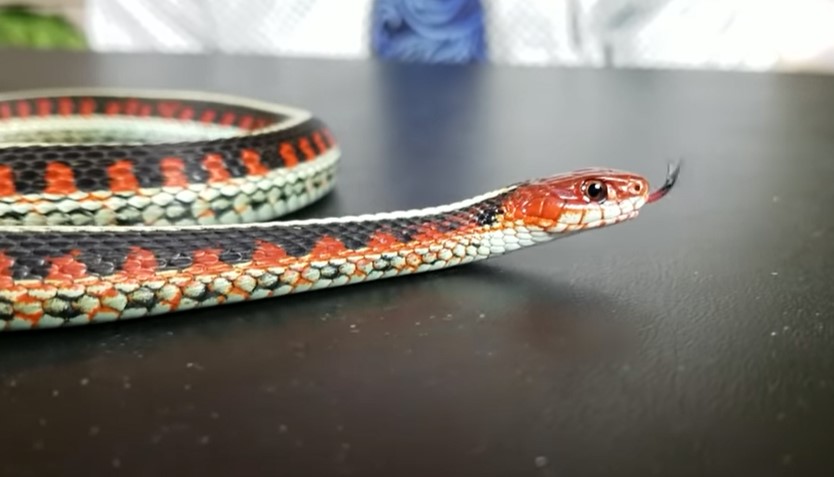
The Garter Snake (Thamnophis) is a species that is particularly common across much of the United States, and they are also frequently kept as pets because of their colorful appearance and relatively small size. The population of Garter Snakes in the United States has reduced over recent years, but the species isn't particularly under threat despite this. For many years they were thought to be non-venomous snakes, but it has now been proved that this species does produce a mild form of venom although its natural development hasn't given the snake an effective way of delivering the venom, meaning that they are of no danger to humans.
Appearance And Diet
The majority of Garter Snakes will have stripes running down the length of the body, and depending on the individual variant of the snake this can range from bright red and black down to the more muted browns, yellows and greens. The length of the snakes can range depending on the variant, but a typical example is the Common Garter Snake which will usually be between two feet and four feet in length. These snakes can be fairly heavy bodied, and this does affect the kind of habitat that the Garter Snake will choose.
In terms of the diet, the Garter Snake will eat almost any animal that it can overpower, and this will vary depending on the surroundings in which the snake is living. Many variants of the Garter Snake can be aquatic, and these will often eat amphibians and fish that are to be found in and around the water, but those that tend to live on land are likely to eat mice, rats, birds and amphibians.
Behavior And Habitat
The Garter Snakes are commonly encountered when they are basking in the sun which they have to do in order to in order to regulate their body temperature. They are a little unpredictable when they encounter humans in the wild, with some snakes that will curl up into a coil, hide their heads and flick their tails, while others will strike if disturbed. When frightened these snakes will also release a smelly musk which is a natural way to help it escape from predators. An interesting aspect of the communication of the Garter Snake is that they have an enhanced pheromone system which is particularly useful during the mating season.
In terms of the habitat of Garter Snakes they are commonly found across much of the United States and even into Canada too. It is one of only two species that has a variant to be found in Alaska. Their adaptability means that some Garter Snakes will be successful in areas around water, while others will prefer woodland areas that offer a little more natural color.
Reproduction And Growth Cycle
Garter Snakes are very prolific during mating season, and the competition among males to be order to copulate with the female can be very intense. It is common for up to twenty-five males to be competing to get the female's attention in order to mate, which can lead to what is known as a 'mating ball'. After copulation the female will look to find an area which can give plentiful food and a place to give birth, and they will actually give birth to live young.
The litter can range from five or six all the way up to eighty snakes at once, and these small snakes will be independent from birth. At between five and nine inches long, they will often eat small insects. They will usually grow quickly for the first two years, but after that growth will slow significantly as they mature into adults, and they are known to live for up to ten years in the wild.
Go back to the pestcontrolsnake.com home page.
Copyright 2021 - pestcontrolsnake.com
Nationwide Snake Control